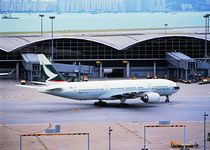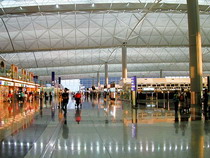A Comparative Analysis of Productivity Performance of China’s Airports
 The aim of this study is to evaluate the productivity performance of China’s airports. As the degree of competition among airports becomes higher and higher over time, airports need to know their competitiveness among others in the industry and identify areas in which improvements in operation are needed. Corresponding to the joint-production nature of airport business, an overall measure summarizing the productivity in producing several outputs from all inputs is utilized in airport benchmarking. The aim of this study is to evaluate the productivity performance of China’s airports. As the degree of competition among airports becomes higher and higher over time, airports need to know their competitiveness among others in the industry and identify areas in which improvements in operation are needed. Corresponding to the joint-production nature of airport business, an overall measure summarizing the productivity in producing several outputs from all inputs is utilized in airport benchmarking.
Two different methods are used to obtain productivity measures of airports, namely the econometric approach and the operations research approach. Under the econometric approach, regression analysis is used to calculate a total factor productivity (TFP) measure for each airport, |
and determinants of TFP levels (including both managerial and other environmental factors) are identified in a second-stage analysis. Under the operations research approach, Data Envelopment Analysis (DEA) is applied to compute the efficiency indices for airports. Technical and scale efficiencies are calculated for the purpose of checking whether there are any scale economies or diseconomies in China’s airports. Factors affecting efficiency scores are also analyzed.
 Data used are mainly physical inputs and outputs of airports. Input variables may include capital inputs, labor inputs and soft cost inputs. Outputs may include passenger handling volume, cargo handling volume and aircraft movements. Financial (revenue and cost) data may also be included for an analysis in more details, subject to their availability. Data used are mainly physical inputs and outputs of airports. Input variables may include capital inputs, labor inputs and soft cost inputs. Outputs may include passenger handling volume, cargo handling volume and aircraft movements. Financial (revenue and cost) data may also be included for an analysis in more details, subject to their availability.
|


 The aim of this study is to evaluate the productivity performance of China’s airports. As the degree of competition among airports becomes higher and higher over time, airports need to know their competitiveness among others in the industry and identify areas in which improvements in operation are needed. Corresponding to the joint-production nature of airport business, an overall measure summarizing the productivity in producing several outputs from all inputs is utilized in airport benchmarking.
The aim of this study is to evaluate the productivity performance of China’s airports. As the degree of competition among airports becomes higher and higher over time, airports need to know their competitiveness among others in the industry and identify areas in which improvements in operation are needed. Corresponding to the joint-production nature of airport business, an overall measure summarizing the productivity in producing several outputs from all inputs is utilized in airport benchmarking. Data used are mainly physical inputs and outputs of airports. Input variables may include capital inputs, labor inputs and soft cost inputs. Outputs may include passenger handling volume, cargo handling volume and aircraft movements. Financial (revenue and cost) data may also be included for an analysis in more details, subject to their availability.
Data used are mainly physical inputs and outputs of airports. Input variables may include capital inputs, labor inputs and soft cost inputs. Outputs may include passenger handling volume, cargo handling volume and aircraft movements. Financial (revenue and cost) data may also be included for an analysis in more details, subject to their availability.
